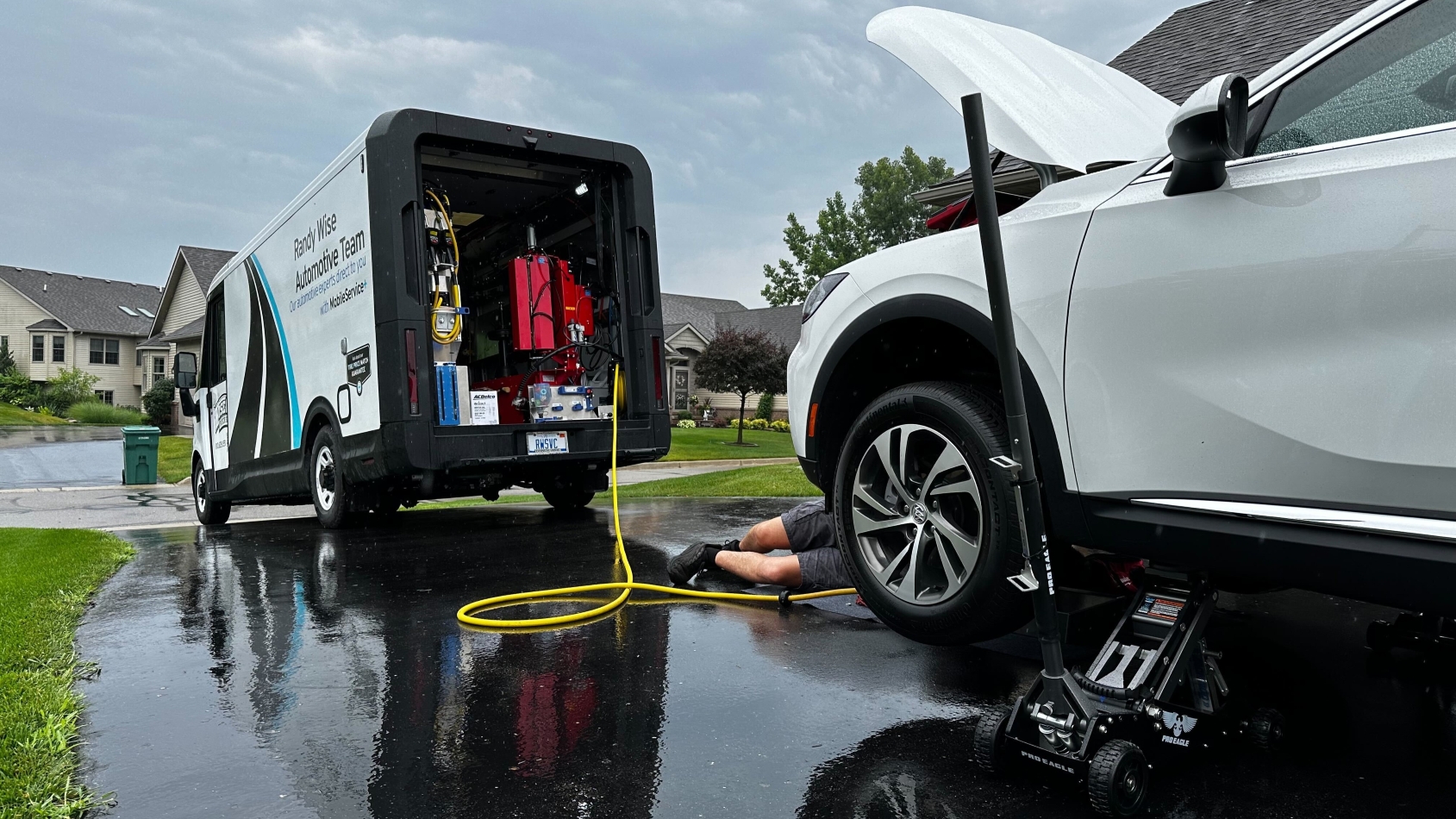Curbee report says mobile service can help dealers overcome not-so-sweet 16

Image courtesy of Curbee.
By subscribing, you agree to receive communications from Auto Remarketing and our partners in accordance with our Privacy Policy. We may share your information with select partners and sponsors who may contact you about their products and services. You may unsubscribe at any time.
Curbee’s latest report is about a 16 that’s not so sweet for dealership service departments.
The mobile service technology provider’s report, titled The16, is built around statistics from IBISWorld showing there are more than 300,000 independent auto repair shops in the U.S. compared to some 18,000 franchise dealerships — a massive 16-to-1 advantage for the independents that creates what Curbee called “a convenience and visibility gap” for dealerships.
It shouldn’t be a surprise, then, that Cox Automotive’s recent Service Industry Study found independent general repair shops (33%) beat dealerships (31%) as consumers’ preferred option for service, with “convenient location” selected as one of the top reasons for that choice.
That said, Curbee’s report, which analyzed publicly available data from the Auto Care Association, CDG Fixed Ops Pulse, Cox Automotive, NADA, the Bureau of Labor Statistics, Experian, IBISWorld, S&P Global Mobility, WrenchWay and others, looks at how dealerships can beat those odds by becoming even more convenient.
“The average American drives past 16 places that can service their car before they get to their local franchised dealer,” Curbee CEO Amit Chandarana said. “That’s bananas. But it’s also a massive opportunity. Dealers who go mobile literally meet their customers where they are, deliver speed and transparency, and win loyalty without adding bricks and mortar.”
Data from several sources shows independents are perceived as closer, faster, less expensive and more flexible as a result of their greater locations, simple digital experiences and growing mobile offerings, noting consumers expect on-demand booking, rapid turnarounds and service where they are.
Subscribe to Auto Remarketing to stay informed and stay ahead.
By subscribing, you agree to receive communications from Auto Remarketing and our partners in accordance with our Privacy Policy. We may share your information with select partners and sponsors who may contact you about their products and services. You may unsubscribe at any time.
“Dealers might still have better tools and factory-trained technicians, but that doesn’t matter if the customer never makes it through the door,” the report said.
Curbee’s report said dealers can combat their competition with mobile service options that give dealerships “the tech, tools and playbook to outcompete the independents by … delivering dealership-grade service — from factory-trained technicians — anywhere.”
The report suggests mobile service can help dealers with artificial intelligence-driven routing and parts forecasting to send the right parts in the right van to the right job, and faster delivery with techs servicing vehicles at the customer’s home, work or elsewhere. Plus, Curbee said, it can help them keep customers in the dealership ecosystem from sale to sale; capture data with end-to-end analytics on bookings, repair order trends and revenue; and provide increased revenue to reinvest in the customer experience.
The report said the auto service industry will change more in the next 10 years than it did in the previous 50, with successful operations using a hybrid model that blends in-store, mobile and virtual experiences, data that can predict consumer needs before breakdowns happen and a “customer-centric approach that defines service by accessibility, not address.”
Curbee said its internal data shows mobile service also drives customer recovery, as 92% of customers who had not serviced their vehicle at the dealership for more than 18 months accepted a mobile service appointment when offered.
“Mobile service doesn’t just retain customers, it brings back the ones who already left,” Chandarana said. “With the right software, tools and playbook, dealers expand capacity, lift customer satisfaction and retention, and turn convenience into a competitive moat.”


